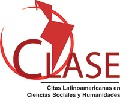Las nuevas periferias americanas en la circulación de cáñamo y jarcia para la construcción naval militar española en el siglo XVIII
Resumen
Desde hace años los historiadores que han trabajado en comprender mejor el proceso de formación de los estados modernos han coincidido en destacar que un factor muy importante del éxito de estas instituciones pasó siempre por sus mejores o peores capacidades a la hora de movilizar recursos estratégicos. Por esta razón es razonable dedicar este trabajo para analizar la importancia del cáñamo como un producto estratégico por el que el Imperio español estableció un abastecimiento desde España que garantizara el dominio y la defensa de los nuevos espacios ultramarinos. Y, al mismo tiempo, la monarquía realizó un gran esfuerzo en fomentar el cultivo cannabáceo en América provocando con ello el establecimiento de rutas de circulación de esta fibra por los diferentes mercados regionales de consumo en la costa del Pacífico.
Palabras clave
Texto completo:
PDFReferencias
ALDCROFT, D. H. y SUTCLIFFE, A., (2005). Europe in the international economy, 1500 to 2000, Cheltenham: Edward Elgar.
ANANICH, B. V., (2006). “The Russian economy and banking system”. En D. LIEVEN (Ed.), The Cambridge history of Russia. Imperial Russia, 1689-1917. (pp. 394–428). Cambridge: Cambridge University Press.
ANDRADE MUÑOZ, G. L., (2006). Un mar de intereses: la producción de pertrechos navales en Nueva España, siglo XVIII, México D. F.: Instituto Mora.
BLACK, D., (1706). Essay upon industry and trade: shewing the necessity of the one, the conveniency and usefulness of the other, and the advantages of both ... Edinburgh: James Watson.
BOUBY, L., (2002). “Le chanvre (Cannabis sativa L.): une plante cultivée à la fin de l’âge du Fer en France du Sud-Ouest?”. Comptes Rendus Palevol, 1 (2), pp. 89-95.
BOWEN, H. V. y GONZÁLEZ ENCISO, A., (2006). Mobilising resources for war: Britain and Spain at work during the early Modern Period, Pamplona: Ediciones Universidad de Navarra.
CELETTI, D., (2013). “Le chanvre face à la crise Les cas italien, français et russe (17e-19e siècles). Crises and Alternative Agriculture in an European Perspective”, Trabajo presentado a 3èmes Journées d’Histoire des Campagnes Européennes de Trévise, 3-4 diciembre de 2013. Trévise.
CROSBY, A. W., (1965). America, Russia, hemp, and Napoleon: American trade with Russia and the Baltic, 1783-1812, Columbus: Ohio State University Press.
CURRY-MACHADO, J. (Ed.), (2013). Global histories, imperial commodities, local interactions, New York: Palgrave Macmillan.
DEITCH, R., (2003). Hemp: American history revisited: the plant with a divided history, New York: Algora Pub.
DE CHARLEVOIX, P. F. X., (1910). Historia del Paraguay, Madrid: Librería General de Victoriano Suárez.
DE TORQUEMADA, J., (1615), Iª [ IIIª] parte de los veynte y un libros rituales y monarchia Indiana, Sevilla: Matías Clavijo.
DE VELASCO, J., (1844 [1789]). Historia del Reino de Quito en la América Meridional, Quito: Imprenta del Gobierno, por Suarez de Valdés.
DE ZORITA, A., (1909). Historia de la Nueva España, Madrid: Librería General de Victoriano Suárez.
DE UZTÁRIZ, G., (1742). Theorica y practica de comercio, y de marina: en diferentes discursos, Madrid: Imprenta de Antonio Sanz.
DÍAZ-ORDÓÑEZ, M., (En prensa). “European Imperialism, War, Strategic Commodities, and Ecological Limits. The Diffusion of Hemp in South America and its Ghost Fibers”. En B. YUN CASALILLA, I. BERTI y P. M. O. SVRIZ WUCHERER (Eds.), American Globalization. On the Introduction of Old World’s Goods in the Americas (c.1492-1898). Nueva York: Routledge.
DÍAZ-ORDÓÑEZ, M., (2001). “El Reformismo Borbónico y el suministro de jarcia para la Armada española. 1720-1740”. En VV. AA., Actas XII Congreso Internacional de AHILA. (pp. 277–288). Oporto: AHILA.
DÍAZ-ORDÓÑEZ, M., (2003). “El riesgo de contratar con el enemigo. Suministros ingleses para la Armada Real española en el siglo XVIII”. Revista de Historia Naval, 80 (21), pp. 65–74.
DÍAZ-ORDÓÑEZ, M., (2005). “El cáñamo y la Corona española en Ultramar: América y Filipinas (siglos XVI-XVIII)”. Revista de Historia Naval, 90, pp. 45–60.
DÍAZ-ORDÓÑEZ, M., (2006). “Si en la comisión de Marina te vieres...: las dificultades salariales y de promoción de un técnico comisionado de la Armada Real en el setecientos”, Revista de Historia Naval, 95 (24), pp. 71–88.
DÍAZ-ORDÓÑEZ, M., (2009). Amarrados al negocio: reformismo borbónico y suministro de Jarcia para la Armada Real (1675-1751), Madrid: Ministerio de Defensa, Secretaría General Técnica.
DÍAZ-ORDÓÑEZ, M., (2016). “La comisión del cáñamo en Granada. Sustituir la dependencia báltica como estrategia defensiva del Imperio español en el siglo XVIII”. Vegueta: Anuario de la Facultad de Geografía e Historia, 16, pp. 93-123.
DÍAZ-ORDÓÑEZ, M., (2017). “Los pros y los contras de la guerra como motor de la globalización del cáñamo en América en el siglo XVII”. En A. J. RODRÍGUEZ HERNÁNDEZ, J. ARROYO VOZMEDIANO y J. A. SÁNCHEZ BELÉN (Eds.), Comercio, guerra y finanzas en una época en transición (siglos XVII-XVIII) (pp. 61–90). Valladolid: Ediciones Castilla.
DÍAZ-ORDÓÑEZ, M., (2017). “Reflexiones en torno a la integración del mercado europeo del cáñamo en el siglo XVIII”. XII Congreso Internacional de la Asociación Española de Historia Económica. Salamanca.
DÍAZ-ORDÓÑEZ, M., (2018). “Radiografía de un fracaso angloespañol: el cáñamo, un producto que debería de haber llegado de América durante los siglos XVI-XIX”. Obradoiro de Historia Moderna, 27, pp. 263-289.
DÍAZ-ORDÓÑEZ, M., (2019). “El abastecimiento militar de cáñamo para el imperio español (1665-1808): globalización, estado y empresarios en el largo Siglo XVIII”. Espacio, tiempo y forma. Serie IV, Historia moderna, 32, pp. 45-72.
ELEJALDE, B. R., (1975). “Marihuana and Genetic Studies in Colombia: The Problem in the City and in the Country”. En V. RUBIN (Ed.), Cannabis and Culture (pp. 327-343). La Haya: Mouton Publishers.
GARCÍA, J., (1858). Colección de documentos para la historia de México, T. I, México: Librería de J. M. Andrade. (Dentro Motolinia, T. Historia de los indios de Nueva España).
GARCÍA REGUEIRO, O., (1985). “Oro y descubrimiento: La expedición de Gil González Dávila”. Cuadernos hispanoamericanos, 418, pp. 5-33.
GEE, J., (1753). Consideraciones sobre el comercio, y la navegación de la Gran Bretaña: escritas en inglés, Madrid: J. de San Martin.
GEE, J., (1767). Considerations on the expediency of a bounty upon hemp and flax of home growth, London: s.n.
HARDING, R., (2000). Seapower and Naval Warfare, 1650-1830, Londres: Routledge.
HAZAREESINGH, S. y CURRY-MACHADO, J., (2009). “Commodities, empires, and global history (Guest Editorial, Special issue of the Journal of Global History)”. Journal of Global History, 4 (1), pp. 1-5.
HOPKINS, T. K. y WALLERSTEIN, I., (1986). “Commodity Chains in the World-Economy Prior to 1800”. Review: a journal of the Fernand Braudel Center for the Study of Economies, Historical Systems and Civilizations, 10 (1), pp. 157–170.
HOWARTH, D., (2003). British sea power: How Britain became sovereign of the seas, New York: Carroll & Graf Publ.
JUAN, J. y ULLOA, A. de, (1826). Noticias secretas de América, Londres: Imprenta de R. Taylor.
KAPLAN, H. H., (1995). Russian overseas commerce with Great Britain during the reign of Catherine II, Philadelphia: American Philosophical Society.
LÓPEZ DE VELASCO, J., (1894). Geografía y descripción universal de las Indias, desde el año de 1571 al de 1574, Madrid: Establecimiento tipográfico de Fortanet.
MARSHALL, J., (1772). Travels Through Holland, Flanders, Germany, Denmark, Sweden, Lapland, Russia, The Ukraine, and Poland in the years 1768, 1769 and 1770, Londres: J. Almon.
MERINO NAVARRO, J. P., (1975). “Cultivos industriales: el cáñamo en España (1750-1800)”. Hispania: Revista española de historia, 131 (35), pp. 567-584.
MOSK, S. A., (1939). “Subsidized Hemp Production in Spanish California”. Agricultural History, 13 (4), pp. 171-175.
ODDY, J. J., (1805). European commerce, shewing new and secure channels of trade with the continent of Europe with a general view of the trade, navigation, produce and manufactures, of the United Kingdom of Great Britain & Ireland, London: W.J. & J. Richardson.
POMERANZ, K., (2000). The Great Divergence, Princeton: Princeton UP.
QUINCY, E., (1765). A treatise of hemp husbandry; ... with some introductory observations, upon the necessity which the American British Colonies are under, generally to engage in the said production, etc., Boston: Green & Ruffell.
REYNOLDS, C. G., (1974). Command of the sea: the history and strategy of maritime empires, New York: Morrow.
RIVAS IBÁÑEZ, I., (2009). “Mobilizing resources for war: The British and Spanish intelligence systems during the war of Jenkins’ Ear (1739-1744)”. (Tesis doctoral en Historia). Londres: University College London.
ROBINSON, R., (1996). The Great Book of Hemp: The Complete Guide to the Environmental, Commercial, and Medicinal Uses of the World’s Most Extraordinary Plant, Rochester: Park Street Press.
RODGER, N. A. M., (2006). The command of the ocean: a naval history of Britain 1649-1815, Londres: Penguin Books.
ROMANO, R., (1962). “Per una valutazione della flotta mercantile europea alla fine del secolo XVIII”. En A. GIUFFRÉ (Dir.), Studi in Onore di Amintore Fanfani (pp. 573–591). Milán: Giuffré.
RÖNNBÄCK, K., (2010). “New and old peripheries: Britain, the Baltic, and the Americas in the Great Divergence”. Journal of Global History, 5 (3), pp. 373-394.
RUTHERFURD, J., (1761). The importance of the colonies to Great Britain with some hints towards making improvements to their mutual advantage: and upon trade in general, Londres: Impreso por J. Millan.
SÁNCHEZ VALVERDE, A., (1862). Idea del valor de la isla española de Santo Domingo, Santo Domingo: Imprenta Nacional.
SERRERA CONTRERAS, R. M., (1974). Cultivo y manufactura de lino y cáñamo en Nueva España, 1777-1800, Sevilla: Escuela de Estudios Hispano/Americanos de Sevilla.
SOCIETY FOR THE ENCOURAGEMENT OF ARTS, MANUFACTURES, AND COMMERCE, (1764). Museum Rusticum Et Commerciale, Or, Select Papers on Agriculture, Commerce, Arts, and Manufactures, London: R. Davis.
STUBBS, J. y CLARENCE-SMITH, W., (2007). British Academy Research Project Commodities of Empire. https://commoditiesofempire.org.uk/ Fecha de consulta: 4 de octubre de 2018.
TOOKE, W., (1799). View of the Russian Empire during the reign of Catharine the Second and to the close of the present century, London: Printed for T.N. Longman, O. Rees, and J. Debrett.
TORRES SÁNCHEZ, R. (Ed.), (2007). War, State and development: fiscal-military states in the eighteenth century, Pamplona: Ediciones Universidad de Navarra.
TORRES SÁNCHEZ, R. (Ed.), (2013). “El negocio de la guerra. La movilización de recursos militares y la construcción de la Monarquía española, siglos XVII y XVIII”. Studia historica. Historia moderna, 35, pp. 23-32.
TORRES SÁNCHEZ, R., (2016). Military entrepreneurs and the Spanish contractor state in the eighteenth century, Oxford: Oxford University Press.
TORRES-SÁNCHEZ, R., (2012). “La Política de abastecimiento de cáñamo a la Armada en la segunda mitad del siglo XVIII”. Revista de Historia Naval, 116, pp. 47-71.
UNGER, R. W., (1992). “The tonnage of Europe’s merchant fleets, 1300–1800”. The American Neptune, 52, pp. 247-261.
VAN ZANDEN, J. L., (2000). “Early modern economic growth: a survey of the European Economy (1500-1800)”. En M. R. PRAK (Ed.), Early modern capitalism (pp. 69-87). Londres: Routledge.
WILSON, B., (2014). Empire of the deep: the rise and fall of the British Navy, Londres: Phoenix.
YUN, B., (2019a). Iberian World Empires and the Globalization of Europe 1415-1668, Singapur: Palgrave.
YUN, B., (2019b). Los imperios ibéricos y la globalización de Europa (siglos XV a XVII), Barcelona: Galaxia Gutemberg.
Enlaces refback
- No hay ningún enlace refback.
Copyright (c) 2019 Magallánica : revista de historia moderna

Este obra está bajo una licencia de Creative Commons Reconocimiento-NoComercial-CompartirIgual 4.0 Internacional.
 | Magallánica : Revista de Historia Moderna es editada por el Grupo de Investigación en Historia de Europa Moderna de la Facultad de Humanidades de la Universidad Nacional de Mar del Plata y por la Red de Historia Moderna ISSN 2422-779X (en línea)
|
La Dirección no se responsabiliza por las opiniones vertidas en los artículos firmados. | |
Resultados de evaluación: Magallánica... es evaluada por:
Magallánica...se encuentra en las siguientes bases de datos:
Miembro de:
| |



























